The First Flights Classes and The Copy Paper Squirrel
The local Experimental Aircraft Association chapter (i.e. Columbus, Indiana) has had great success with the Young Eagle Flights that it has offered. The Young Eagle Flights have been well received by both the students who got to go on one of these flights and their parents. But, the parents have often commented that the Young Eagle Flight was a good experience but what do they do next? Unfortunately, we didn’t have a good response.
In an attempt to fill this void, in 2000 I started offering aviation classes at Parkside Elementary as part of their After Hours Classes. These classes initially used the “Flight Site” that had been donated by the Experimental Aircraft Association and later added the Delta Dart project. In the Fall of 2004 these classes moved to the Boys and Girls Club of Columbus, Indiana (i.e. this part of an organization called the Foundation For Youth (FFY)). By moving the classes to the FFY I was able to offer these classes more often and reach a better target audience. Also, with the move to the FFY, these classes became known as the First Flights Classes. The name for these classes comes from after the kids have completed building their projects and successfully completed their first flight with it they get to take it home. These class materials have also been used to earn the Boy Scout Aviation Merit badge and the Girl Scout Aerospace badge.
The First Flights Classes now include the following projects:
• Fantastic Flyer balsa glider
• First Flights Flyer balsa glider
• Squirrel balsa/tissue rubber powered airplane
• Delta Dart balsa/tissue rubber powered airplane
• Hot Air Balloons
• Sled Kites
• “Bottle Rockets”
• Making Wooden Airplane Ribs
• Fly a remote control model airplane
• Flying Microsoft Flight Simulator
• Participating in a Young Eagle Flight Rally
• VW Powered Renegade Racer
The Squirrel was added to the list of First Flights Class projects as a simplified alternative to the Delta Dart project (i.e. another low cost rubber powered model airplane). The Squirrel is easier to build than the Delta Dart because all of the balsa pieces are cut at a ninety degree angle and can be pre-cut to specified lengths so that no fitting of the balsa pieces is required. The Squirrel also has the advantage that the position of the wing on the fuselage can be adjusted (i.e. the wing is held to fuselage with a rubber band) making it easier to adjust it to fly well. My intention was to use the Squirrel project as the project that follows mastering making the balsa glider projects but to be built prior to making the Delta Dart project.
But, the students that I typically teach at the Foundation For Youth are in 3rd or 4th grade (i.e. 9 – 10 years old) and they had difficulty building the Squirrel on top of the tissue paper. To simplify the construction I developed the Copy Paper Squirrel version of the tissue covered Squirrel (i.e. the Squirrel was designed by Darcy Whyte and he has graciously given his permission to use the material that he has developed for the Squirrel). The biggest difference between the Copy Paper Squirrel and the Squirrel is that it is built on plans printed on copy paper rather than on top of tissue paper. Admittedly, the copy paper is twice as heavy as the tissue paper. So, a completed airplane with a covered wing is 13% heavier when built with copy paper rather than the tissue paper. Comparing to the uncovered wing would reduce this difference. Also, since we almost exclusively fly the Copy Paper Squirrel inside, we use 3/32” wide rubber instead of 1/8” wide rubber to give us longer and slower flights. The use of the 3/32” wide rubber also has the advantage of less weight. Yes, the 1/8” wide rubber is recommended for flying outside.
The Copy Paper Squirrel has been a great hit. The kids really enjoy building it and flying it. The double gym at the Foundation For Youth provides a great place for them to fly their projects before taking them home. The attached pictures show the kids flying their completed projects.
There are two different ways to look at what the students gain by participating in these First Flights classes. Both are equally valid. First and most obvious, these classes are a chance to learn about aviation. The students learn about aviation by learning some affordable, age appropriate ways to be involved in aviation, some basic model making skills and they have fun. To do this, I have a series of projects that the students build and fly. Beyond this, they can fly a remote control airplane, fly a flight simulator or get to go flying in an airplane. The second way to view these classes is that it gives them a chance to learn basic skills that can be applied in many different ways. The skills learned can include basic math and science, weather, how to make things, goal setting and working in a group. The FFY calls this “stealth learning”. I use aviation to make the classes interesting but we are teaching skills that can be applied elsewhere.
One of the things that I have found is that these classes need to be adapted to where ever they are offered. An example of this is that the Parkside Elementary School library, where we previously offered classes, has a great balcony for launching gliders. Whereas, the classes at the airport offered a nice outside area for flying models (i.e. outside the fence) and the ability to take the kids out on to the airport ramp when the models are drying. The classes at the Foundation For Youth have the ability to reserve the gym for flying models. But, these FFY classes need to be more flexible as attendance varies depending if the students are able to attend each week (i.e. may depend on which parent they are staying with that week or when they are getting picked up).
For these classes each student has their own set of tools that they use. This allows each student to focus on their own project. Students do not have to spend time figuring out where the needed tools went or if someone is making their project faster than them. Further, every attempt is made to use tools that are low cost and can be purchased locally (i.e. this gives examples of what they could use if they want to be making models at home).
Because I want to make sure each student has a chance to see their project fly and fly well, we don’t let them take their projects home until they have flown it with us. This way we can show them how to adjust their projects to make them fly well. It also ensures that they leave with a sense of accomplishment about their projects rather than frustration. Further, with stories like “When I took it home, my cat jumped on it”, “it got broken in my backpack” or “my little brother broke it”, we want to make sure that they have seen their projects fly well. Having an indoor gym at the FFY to fly the models in is a big advantage (i.e. the weather is dependable; the models can’t fly away and it helps with keeping the kids together).
Another goal of these classes is to keep the cost of offering these classes as low as possible. An example of this is that the raw materials for projects are purchased in bulk and I can use my band saw to cut the wood to the needed sizes. The students then need to round off the ends and make some measurements to apply some reference marks. By the doing this, the cost of the materials for most of the projects can be kept to less than $1.00/each. By keeping the cost low it isn’t a big issue when something needs to be replaced due to errors in making the project or when repairing a broken project.
Part of why I offer these classes is seeing the joy that the students have in taking these classes and part is knowing these students wouldn’t be learning or exposed to these things if these classes weren’t being offered. The students clearly want to be in these classes as demonstrated by the disappointment of the students that can not be fit into a particular session. Or the joy when they get to see the projects that they made fly well and the surprise in finding out they get to take their projects home with them. This is also demonstrated by the nice Christmas cards that the students of the classes made for me or by stopping to say “Hi” to me when they see me outside of these classes.
This website was put together as a way to share what has been developed for these classes and to receive feedback about these classes. The website is located at: http://www.bakalar.org/FirstFlights/
So, this is a basic summary of the First Flights classes that I offer. If you would like more details, please let me know. My email address is First_Flights@yahoo.com
Brett Herrick
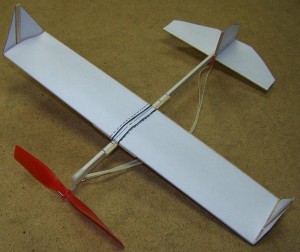
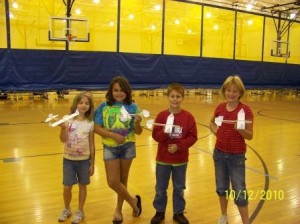
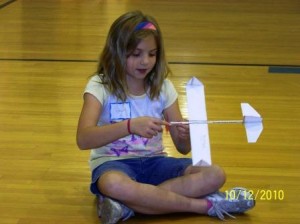
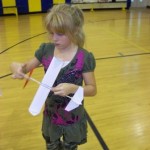
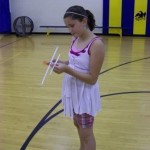
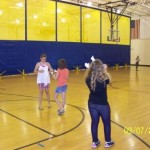
err…can we use bamboo sticks instead of balsa ? also,could you send me a plan with outlines for the plane!
thanks
Here is my evaluation regarding using the onion skin paper for the Copy Paper Squirrel rather than the 20 lb. copy paper.
Switching to the onion skin paper does cut the weight of the covering material in half (i.e. essentially the same as using tissue paper) and thus, result in an ~10% reduction in weight of the finished model.
But, the kids in my First Flights class at the local Boys and Girls Club are typically 8 – 10 years old. Some of them have a difficult time with the 20 lb. paper (i.e. cutting it out, not getting it all wrinkled, being able to fold it on the lines, etc.).
For the age group that I am typically teaching, the added difficulty of working with the lighter paper combined with the added difficulty of procurring / making the 11″ x 17″ pieces of tissue paper and printing the plans on this onion skin is not worth the lighter weight of the finished model.
As a side note, the Copy Paper Squirrel plans and instructions are now on the First Flights website.
Brett
Consider using Onion Skin paper. It will go through the copier and weighs less than copy paper. It is possible to print on tissue paper, but it usually requires attaching the tissue to a heavier paper carrier with glue or tape.
Gary,
Thanks for the kind comments.
Onion skin paper is an interesting idea. I see that some onion skin paper is 9 lb.. The copy paper that I used was 20 lb. paper and it is twice as heavy as the tissue paper that I was using. So, the 9 lb. onion skin paper should have the same weight as the tissue paper!
I think that the challenge may be to find onion skin that is 11″ x 17″ and to get it fed thru the copy machine. I will give it a try.
Brett
Keep me posted on any findings. Especially suppliers and such.
Brett,
These kids are lucky to have this wonderful program.
Some do not value programs that are fun, thinking that they must be frivolous. On the contrary, the single most important thing in education is motivating students to learn. The fun of model aviation motivates them to learn the concepts and problem solving methods needed to get real results. They then generazlize the value of learning to other areas of life.
Gary Hinze
Hi Gary,
I agree wholeheartedly.
This isn’t frivolous. It’s profoundly important for us to provide this to children (and adults!).
Darcy